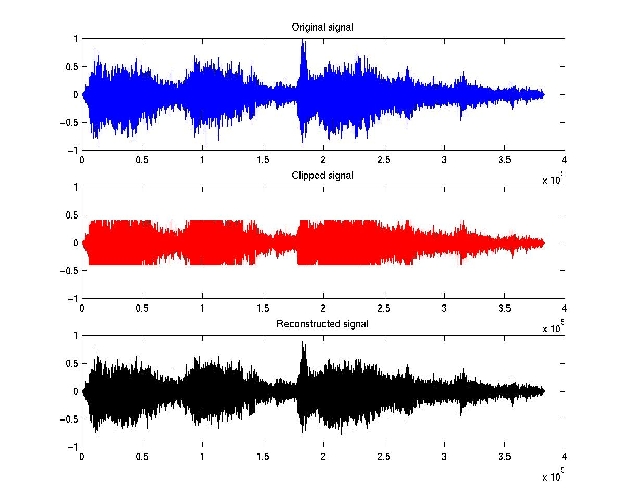
The next figure shows the semgment of the signal above, which suffered most from clipping first together with the clipped signal (above) and then together with its restoration (below). Click on the image to see it in a better resolution.
The algorithm I have developed for this purpose uses local and global informatiom and combines a statistical with a deterministic approach.
You can download an example (I agree, it's not really a
great song) in WAV-format here:
Unclipped signal (8 seconds, thanks to Earl
Vickers for recording it)
Clipped signal
Restored signal
The original signal of the example above, the clipped version, and the restoration are displayed in the figure below. The restoration is not yet perfect (but better than existing patented algorithms). Click on the image to see a larger version.

The next figure shows the semgment of the signal above, which suffered most from clipping first together with the clipped signal (above) and then together with its restoration (below). Click on the image to see it in a better resolution.